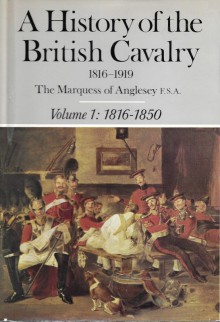
There are few historical episodes as dramatic as the “Hundred Days” – the label given to Napoleon’s doomed attempt to reclaim the French throne and reestablish his empire. Having driven out the restored Bourbon monarchy of Louis XVIII, Napoleon faced off against the coalition of powers that had exiled him to the Mediterranean island of Elba less than a year before. Though Napoleon struck first and scored some initial victories, his defeat at the battle of Waterloo ended his last bid for power, and led to his imprisonment on the remote island of Saint Helena until his death nearly six years later.
It is an understatement to say that there is no shortage of books on the events of the Hundred Days and the battle of Waterloo, as authors began writing about it almost from the moment the guns stilled and have not let up since. Yet even when weighed against two centuries of accounts of the battle, John Hussey’s book stands out. The first of a two-volume work on the Hundred Days campaign, it is the product of meticulous scholarship and careful reassessment of every significance event and controversy involved. This is evident from the very first chapters, as Hussey looks at Europe’s long history with Napoleon and the events leading up to his decision to escape his exile – a decision born of a mix of boredom, ego, ambition, and frustration with the slights inflicted upon the former emperor by the Allied powers that had defeated him.
With a British officer resident on Elba to supervise him and a British warship patrolling the waters between Elba and France, Bonaparte’s decision was not without risk. His successful arrival in France, followed by his bold journey to Paris, though, defied the odds and achieved his goal. Yet Hussey describes the tenuousness of Napoleon’s hold on power, with many in France still exhausted from his reign and wary of what his return might bring. Aware of the post-exile divisions among the coalition, Napoleon hoped they might provide an opportunity to maintain his throne. Nevertheless, he prepared for war.
And war was coming. Hussey devotes considerable space to describing the coalition facing the returned emperor, with pride of place going to the commands led by Gebhard Leberecht von Blücher and Arthur Wellesley, the duke of Wellington. Hussey spends several chapters dealing their commands, their operations, and their activities, with intelligence operations featured prominently. This is central to his efforts to unpack the events of Napoleon’s 1815 campaign and establish clear chronologies and understandings of what the commanders knew and when they learned it. The issues can often seem trivial, but they serve a clear purpose in serving as the basis for Hussey’s analysis of why decisions were undertaken, and why alternatives were not pursued.
Hussey ends the volume with an account of the battles of Ligny and Quatre Bras on 16 July. Though he details the actions separately, he makes it clear that they need to be regarded as a whole. His explanation is of a piece with the rest of the book, in which Hussey lays out the facts and explains how he reached the conclusions he did. It’s a careful work of often painstaking construction, and is what makes the book such a valuable addition to the already substantial library of works on the events of 1815. Take together with its successor volume, it’s a book that serves as an indispensable history of the battle, one that no serious student of the subject can afford to ignore.

 Log in with Facebook
Log in with Facebook 









